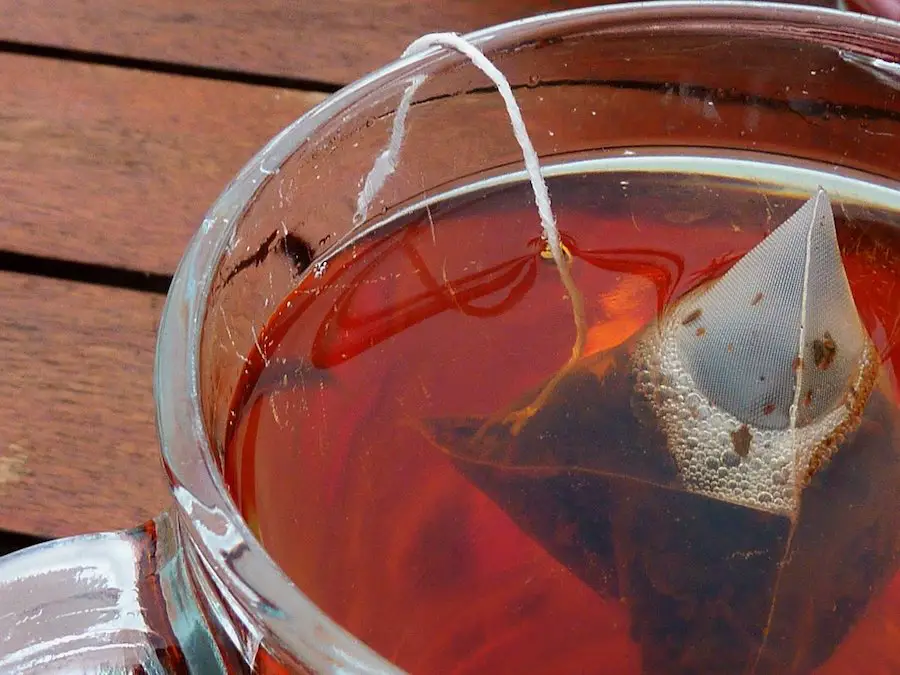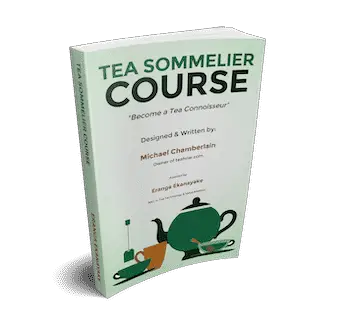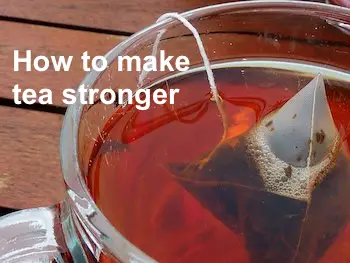Even as a long-time tea connoisseur – of numerous types of tea. I generally still like stronger tea. So I certainly know how to make tea stronger.
Of course, that depends on the type of tea though. Some teas actually lend themselves better to being less strong and more delicate tasting.
But for most teas, there are some easy methods to making tea with just the right strength and depth, here’s the summary on how to make your tea stronger, then I’ll get more into the methods…
To make your tea stronger, simply add more loose-leaf tea (2g per 8 oz cup) consider using higher quality tea, or add a second tea bag. Avoid steeping it for longer as this just makes it more bitter and releases more tannins. Herbal teas can be made stronger with longer steeping times.
This also ties in with why your green tea might be bitter.
As there are three common and easy methods to making stronger tea. I’d probably go with them in this order as a simple list of which to try first…
The three common methods to make your tea stronger are as follows (each may give a different flavor)
- Opt for a high-quality or high-graded tea
- Increase the amount of tea you use per cup than the standard recommended
- For herbal teas, increase the steeping time
While not all these methods may be to your liking, one might just do the trick that gets the desired result, so experiment a little too, perhaps you need three tea bags. Who knows, there are no written rules on this.
So let’s look at what properties make tea strong to begin with…
What actually determines a strong tea
To dive further into this topic, it’s important to get a clear view of what a strong tea is.
Generally, strong tea is often referred to as a tea that has a more intense astringent taste to it.
A strong tea will also have a higher content of usual tea properties like caffeine, tannins, and antioxidants.
In many traditional countries, a cup of strong tea (which is usually black tea) is almost always served with milk and is often drank in the morning as a “Breakfast tea”.
You can find out more about black tea vs milk tea here.
This is because most of us like to start our day with a cup of something strong and brisk along with a caffeine effect to kick start the day.
Brewing a cup of strong tea may urge you to get out of the standard method of brewing tea.
The idea of strong tea often goes hand in hand with the black tea variety. But you can also make any tea variety stronger using the methods I’ve outlined above, so I’ll get into a bit more detail next.
But each tea variety and the method used to make it stronger may give a different taste profile.
Let’s now move on to the easiest ways to change all that!

Opt for a high-quality or high-graded tea to make tea stronger
Many of us fail to brew the perfect cup of strong tea solely because of the quality of the tea we use. This can make the most significant difference, certainly where loose leaf tea is concerned.
In such cases, no matter what technique you follow, getting a strong yet palatable flavor becomes a bit more complex.
Generally, to more easily make strong black tea, you might want to aim for teas that lend themselves very well to offering strength and depth. So aim for varieties like:
- Assam black tea
- Earl Grey tea
- Smoked Lapsang Souchong
- Pu’erh tea
It’s also recommended for you to opt for high-graded tea if you want to more easily make your tea stronger.
Generally, as people can’t usually sample tea before purchasing it, there exists a grading system that rates high-low quality tea based on their freshness, quality, and sizes.
It’s not important that you know all the gradings, and in fact, I provide a simple overview of this in my tea sommelier course.
Choosing stronger tea – basic tea quality gradings
I can put this into a more basic format for you. The high-low quality grading falls into a number of categories that roughly work their way down in terms of quality.
- Whole leaf
- Broken leaf
- Fannings
- Dust
There are then variants on this theme, for example, whole-leaf could mean two leaves and one bud. Or two leaves etc.
This grading system has many other definitive breakdowns – and I’d only suggest you get into this if you want to dive into tea in more detail. In which case, start with the course, that should be enough to get you quick knowledge on tea.
But keeping the above categories in mind should give you a good idea about the grading systems relevant to the tea variety you buy, to ensure you’re getting your hands on excellent quality.
On an even more basic level, generally speaking, the larger the tea leaves, either whole-leaf – or sometimes they come as rolled leaves – the better the quality.
Using a good quality tea can be the most effective way of making a tea stronger, without having to use additional processing; or sacrificing the taste profile.
Increase the amount of tea leaves per cup
If you want to make your tea stronger really easily, without compromising on the flavor, then the simple and probably easiest option is to add more tea – and follow the standard steeping time.
Again for all the tea varieties, there is a standard amount of tea that needs to be added per cup.
For most tea varieties it’s 1 tea bag or 1 teaspoon of tea leaves per 8 oz cup. So for a stronger tea, you need to look at doubling that amount, then adjust it either less or more till you find what works for you.
As normal, still allow it to steep for the recommended steeping time, depending on your tea variety.
Tip: A good tea will usually provide you with the correct steeping times straight off the packet. These have been honed during testing to get the optimum steeping times.
The result should be a stronger tea – but without compromising the flavor. This is often the best option for those who find steeping the tea for longer makes it stronger, but less palatable.
Adding more tea to make it stronger will also provide more of an actual original tea taste. As opposed to a more astringent taste that comes with increased steeping time.
As someone who drank using basic store-bought tea bags most of his life and liked strong tea, I can tell you that the added astringency and tannin levels are particularly true of teabags!
Does increasing the steeping time help at all?
Steeping the tea for longer is a common technique used to increase strength.
You can, of course, adopt this method …as long as you don’t mind the added sting of astringency and tannins in most main types of tea.
If you prefer to use this method, all you have to do is brew your tea longer than the standard steeping time recommends.
Different types of tea varieties call for a standard steeping time to bring out the delicate and nuanced flavors of the tea.
However, if you prefer a stronger flavor, you might have to add a couple of extra minutes in extra steeping time. Until you feel it’s strong enough for your taste buds.
However, remember that steeping your tea for longer may not give you the most ideal tea flavor or taste.
Steeping your tea for longer will just free up the more intense astringent and pungent flavor as it extracts most of the properties from the tea within the extra steeping time. The longer the steep time, the greater the astringency.
This especially applies to actual true tea varieties like black, green, and white tea. Because the true tea varieties are the ones that contain bitter molecules called tannins.
While tanning provides some health benefits, it’s what gives an astringent flavor to the tea.
If you consider making an English breakfast tea, that’s made using a strong tea, with the addition of milk. Then, steeping your black tea for longer can offer up a perfect flavor.
But if you want to have a plain black tea that is strong, steeping for too long may sometimes become unpalatable, depending on your taste preference.
So what about steeping herbal tea for longer…
Steeping the tea for longer to make it taste stronger is ideal for herbal tea varieties. Most herbal teas do not contain anything like the same level of tannins or astringency that true teas do.
In fact, quite the opposite. The additional steep time often enriches the flavor profile further. And thus can draw out more of the benefits of herbal tea.
And because often herbal teas can be weaker anyway, steeping for longer simply enriches the taste value.
How to make tea stronger – more tea value…
I hope this has helped you understand more about how to make tea stronger. Don’t forget to check my Tea Sommelier course to help you quickly become the tea connoisseur in your family!

Take the fast track and become a tea connoisseur
Whether for enjoyment or considering a career as a tea sommelier. This course has everything you need to enhance your tea knowledge and tea-tasting skills.
This course keeps it simple with step-by-step tea tasting and easy reference guides
For pleasure, or as a precursor to a career in the tea industry. Find out what tea sommelier actually does, their career paths, and what they earn.

Find out more about the Teahow Tea Sommelier Course!
